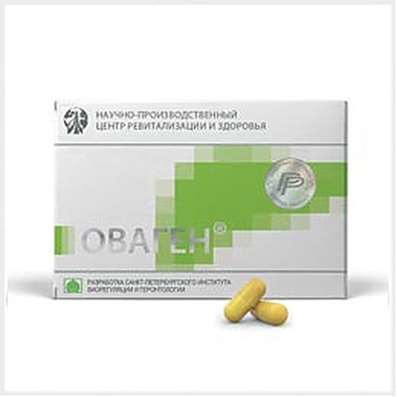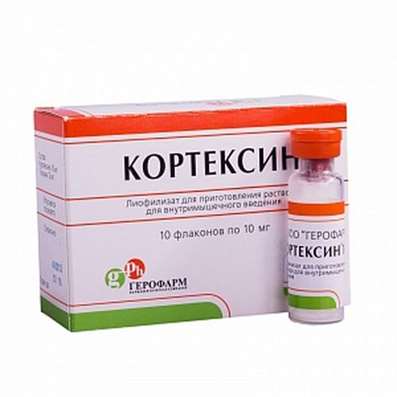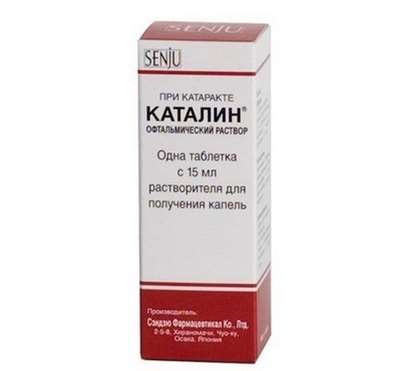Gamma-aminobutyric acid
22 Oct 2016
Physiologist says the imbalance of excitation and inhibition, benzo-diazepines and barbiturates use in medicine.
An important mediator of central nervous system is gamma-aminobutyric acid (abbreviated - GABA).
This substance is the main brake neurotransmitters of the brain, and is in constant competition with glutamate. Glutamate - is the main excitatory neurotransmitter, and its use as a mediator of approximately 40% of the cells. GABA - the main brake for mediators, and again as a mediator is used about 40% of the cells. This leads to parity and the delicate balance of excitation and inhibition in our brain.
Brake function is tremendously important. It is necessary to block the unnecessary information flows. In the XIX century, at the dawn of the study of the brain, it was believed that the institution holding the information - this is very important, and when the information is not available - it's kind of inhibition. Then it turned out that everything is much more complicated. And braking - is not the absence of excitation, and active process that requires its own nerve cells, synapses own, its own mediators and inhibition of energy, our brain is spending perhaps more than even in the excitement. Because in the brain all the time "wandering" Thousands, hundreds of thousands of information flows, and leave only those that are needed, those that are relevant, very difficult. If you do not remove the excess flow of information, "noise" in our brain, which is already very high (no wonder the brain called the noisy computer), simply everything to score, and thought that you started to think, and not come to a logical conclusion.
Therefore, GABA - is a very important mediator. And it is linked to functions such as attention, that is, setting a certain flow of information, motor control, emotional control. At a time when, for example, a first grader decides that he must sit quietly at his desk, unable to move and listen to the teacher, the neurons in his brain, especially, say, in the thalamus, a large amount of secrete GABA, and, indeed, the extra information threads are blocked. And just to sit quietly and not move - it is a huge burden on the GABAergic nerve cells.
GABA - is a fairly simple molecule, resulting, paradoxically, of glutamate. Such is the chemistry of our brains that the principal obstacle to the mediator is the product of a small fracture of the main exciting mediator. That is cleaved from the glutamate carbon dioxide, and has been turned gamma-aminobutyric acid, which can further be used as a mediator and is synthesized in a place right in the synapses. GABA - is not an amino acid food. We do not eat it, that is, it is obtained by synthetic processes in different our cells, primarily in neuronal cells. I must say that in GABA neurons performs two very different functions. Approximately 1% of the substance acts as a mediator, and 99% or perhaps even longer work in the mitochondria during energy exchange, during ATP synthesis and breakdown of glucose. This path - the path decomposition of glucose - is characteristic for neurons. That is, it is not very noticeable in other cells. In nerve cells when glucose falls, one of the intermediate products - it is just the gamma-aminobutyric acid. And at the time for a long time could not believe it, just as in the case of glutamate, that the substance is a mediator, because it is very much in the brain. That is, it would seem, the mediator also has a very delicate function, it should be small and only in the synapses, and here we see that a lot around the GABA neuron, particularly in mitochondria.
You can find GABA in the following drugs: Pantogam, Picamilon etc.
It was found that GABA dual function, and there are quite interesting consequence of this effect, such a "division of responsibilities". If we begin to use GABA as a drug in pill form (such as a tablet is to say, "Aminalon"), is getting into the brain, GABA is not very good, but it passes the blood-brain barrier and enters the nervous system. Once in the brain, neuron, this gamma-aminobutyric acid is not so much an additional brake mediator, who came from the outside, as a good "food." These molecules are captured GABA primarily mitochondria, oxidized, and get extra energy. That is to introduce GABA - is to feed neurons. Thus tablets the gamma-aminobutyric acid performs the function of the overall strengthening of the nervous system, improve. This is especially true of higher brain functions such as thinking, perception, attention.
this kind of drugs called nootropics - a special term coined ( "NOE" - this 'knowledge', Vernadsky, for example, wrote about the noosphere). Nootropics - are drugs that improve the higher functions of the human brain. And they, of course, very, very much in demand, are used in the case of a brain injury, stroke, or any changes or age, for example, when the brain matures too slow or very tired. Suffice it to a wide range of applications. But it is important to distinguish from other nootropics drugs, such as psychomotor stimulants. Sometimes the substance activates the synapses, issue of nootropics. In fact, the real impact is nootropics metabolism in neurons and some synaptic processes impact almost no effect. For example, the present nootropics improve energy generation in mitochondria ameliorate neuronal membranes, improve protein metabolism and so on. If nootrop positioned as a substance having the synaptic activity and acting, for example, nicotinic receptors at dopamine receptors, it is not nootrop. Such a substance should be taken seriously since, with caution because any preparation, real influence on the operation of synapses may cause addiction and dependency, so it's actually not easy. GABA, such as "Aminalon" - this is the true nootrop because the inhibitory effect on the nervous system has practically none.
To gamma-aminobutyric acid is operated as a neurotransmitter, it must be formed in the presynaptic end, the end of the axon, respectively, of glutamate. Then it is released when the nerve impulse comes, and acts on receptors. By the described two types of GABA receptors, which are called the GABAA receptors and GABAB receptors. Both are sure to cause inhibition. That is, gamma-aminobutyric acid - a mediator, always causing braking. That is, it has a definite effect - the cessation of information flows. In reality, this means that there are a large number of synapses in the nerve cell membrane - in some of them is, for example, glutamate, the signal is carried out, but GABA is released here, and if GABA stood out, it can block the holding of these signals. For example, you see orange, and still you'd like to have - two exciting channel that should run your reaction grasping orange and immediate zapihivaniya it into his mouth. But if there is a synapse, where stands of GABA, it can inhibit the inclusion reaction and GABA isolation may mean that it is not your orange, it lies on the tray in the store and you it is not bought, so no need to grab and shove in your mouth.
Impact Brake mediators, which limits our responses, motor, emotional - it really is a very important component of our behavior. That is, the effect of GABA allows to control a variety of reactions, and, accordingly, if there is no GABA if synapses are not active enough, then there is an imbalance of excitation and inhibition. In general, these situations of imbalance of excitation and inhibition frequently inherent in different manifestations of nervous activity. The easy option arises, for example, increased anxiety, impulsivity, in more severe cases, such as insomnia. In children, it is observed as attention deficit hyperactivity disorder: not enough attention and too many motor reactions, difficult to sit at a desk and do nothing. And finally, the most difficult situation, when hit by a very strong balance sheet - it is epilepsy. Epilepsy - is a classic neurological disease in which a certain area of the brain, usually local, so much excitement that this zone periodically erupt activation waves, causing a seizure. And if we want to somehow deal with it, we must first strengthen the work of the GABA system and use drugs that GABA A receptors and GABA B receptors are forced to actively operate. If we use a substance hindering work GABAA receptors, we can, for example, experimental animal or cause increased anxiety run seizures. This is also used, for example, to study the genesis of epilepsy and further select drugs.
It must be said that the evolution of plants has created a lot of toxins, tripping GABA receptors. Known, for example, or bikukulin picrotoxin - these substances by themselves are very powerful convulsive drugs and plants using this type of toxins, poisons protected from herbivores. Sometimes it is quite harmless-looking grass in their sheets of paper contains a hellish poison that at very high dilution can become a drug activates the little brain.
Accordingly, if we want to restore the balance of excitation and inhibition and activating the GABA synapses, GABA receptors, we need substances like gamma-aminobutyric acid. Chemists have found these substances in the late XIX century. At that time, nothing was known about GABA or even synapses. Just going through the various options, accidentally came upon these compounds. The first group of these drugs, "barbiturates" was named. Barbiturates were discovered by German chemists in the Day of Saint Barbara. Varvara (Barbara) - hence the name "barbiturates". However, there is a second root - "urate", which means 'uric acid'. According to one legend, the substance was isolated from the urine on the day of St. Barbara, hence a German romantic name. Barbiturates used in medicine for a long time and are characterized in that cause total inhibition of the brain: the movements and emotions, and attention. Phenobarbital is a part of quite ordinary products, which even sometimes sold without prescriptions. Say, "Corvalol" calms the heart, but one of its components - is phenobarbital, very calming brain, and if you take too much dripped drops, then you have a deceleration of emotions, thought processes, and it is quite dangerous for those who, for example, He is sitting behind the wheel, because the reaction rate decreases. Therefore, barbiturates always very organized pharmacologists, there was a search softer active compounds. By the middle of the XX century there were compounds such as benzodiazepines. They already operate more smoothly and is now used as anti-anxiety drugs, tranquilizers. They are used in epilepsy, in order to reduce the likelihood of seizures. A barbiturates continue to be used for anesthesia, because, when the operation is a long time, it is more suitable barbiturates.
And another group of drugs related to gamma-aminobutyric acid - valproate is. The fact is that when the gamma-aminobutyric acid has fulfilled its function and gave a brake signal on its need to destroy. It makes a special enzyme, called GABA-transferase, and valproate - a blocker of the GABA-transferase. And if we use, we achieve the effect as long floats in GABA synaptic environment longer acts on receptors, respectively, also enhanced the inhibition in the brain. And valproate are very important drugs for epilepsy, because they can be used chronically, gently, in small doses. And they are particularly relevant with childhood epilepsy, when you need to carefully monitor the state of the child's nervous system and very accurately pick up doses, depending on its age.

 Cart
Cart





